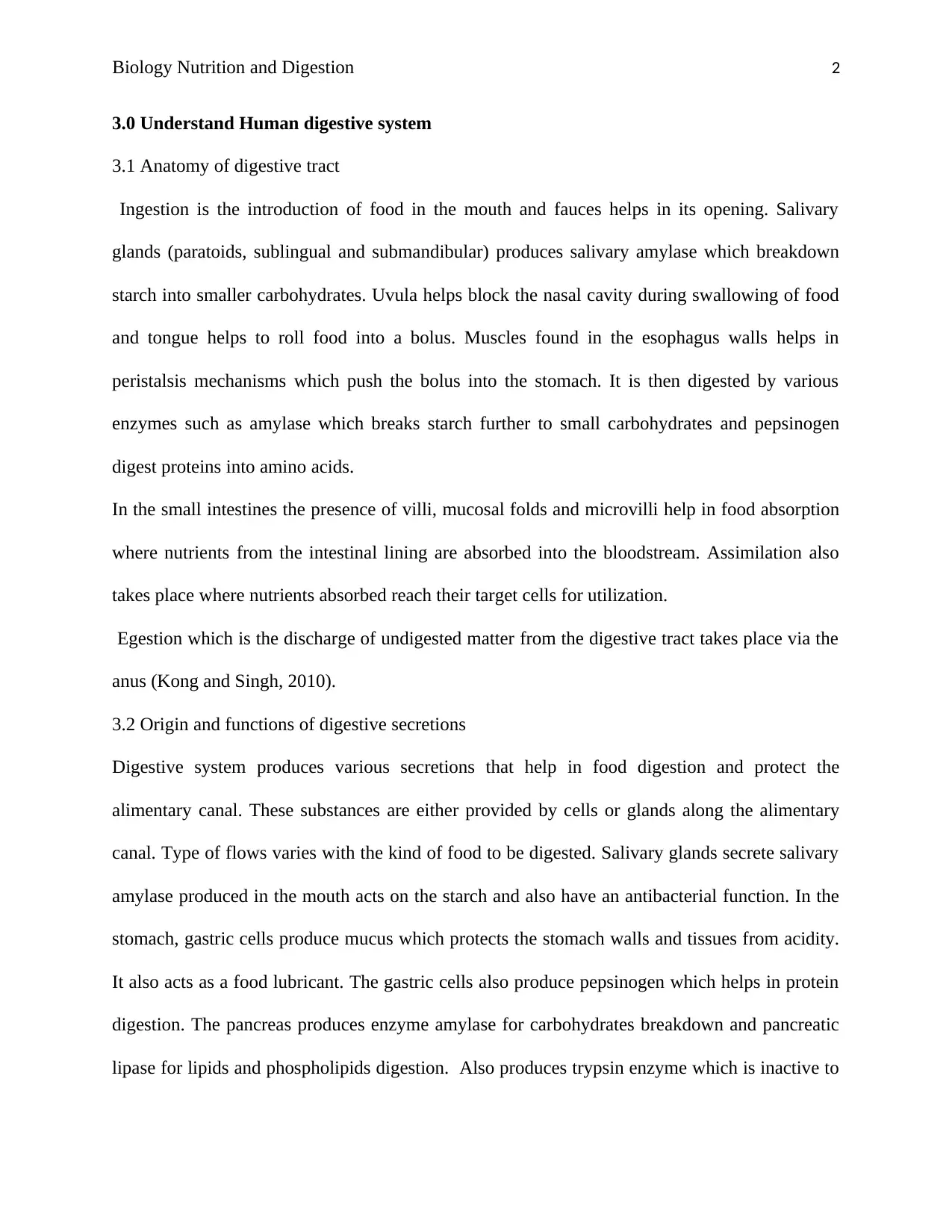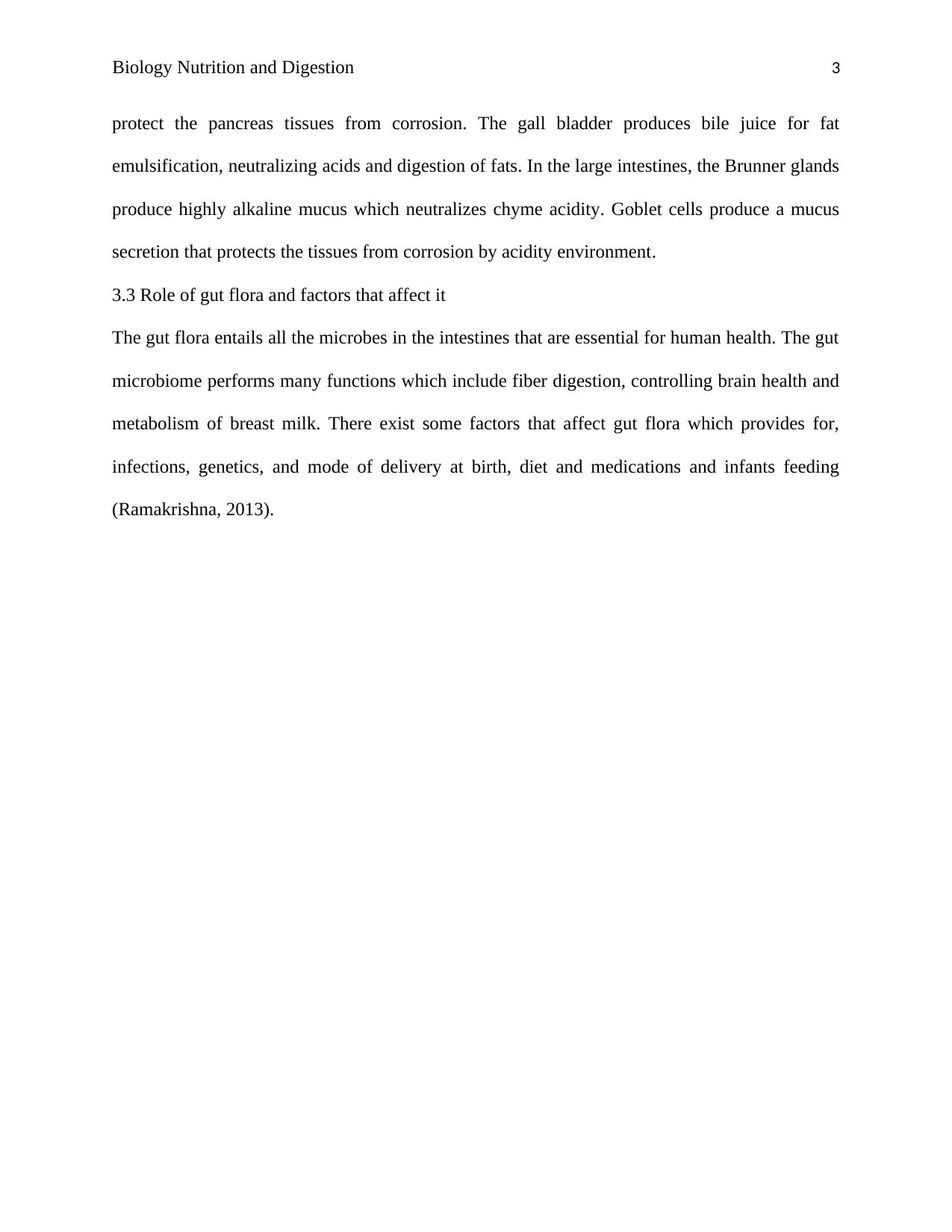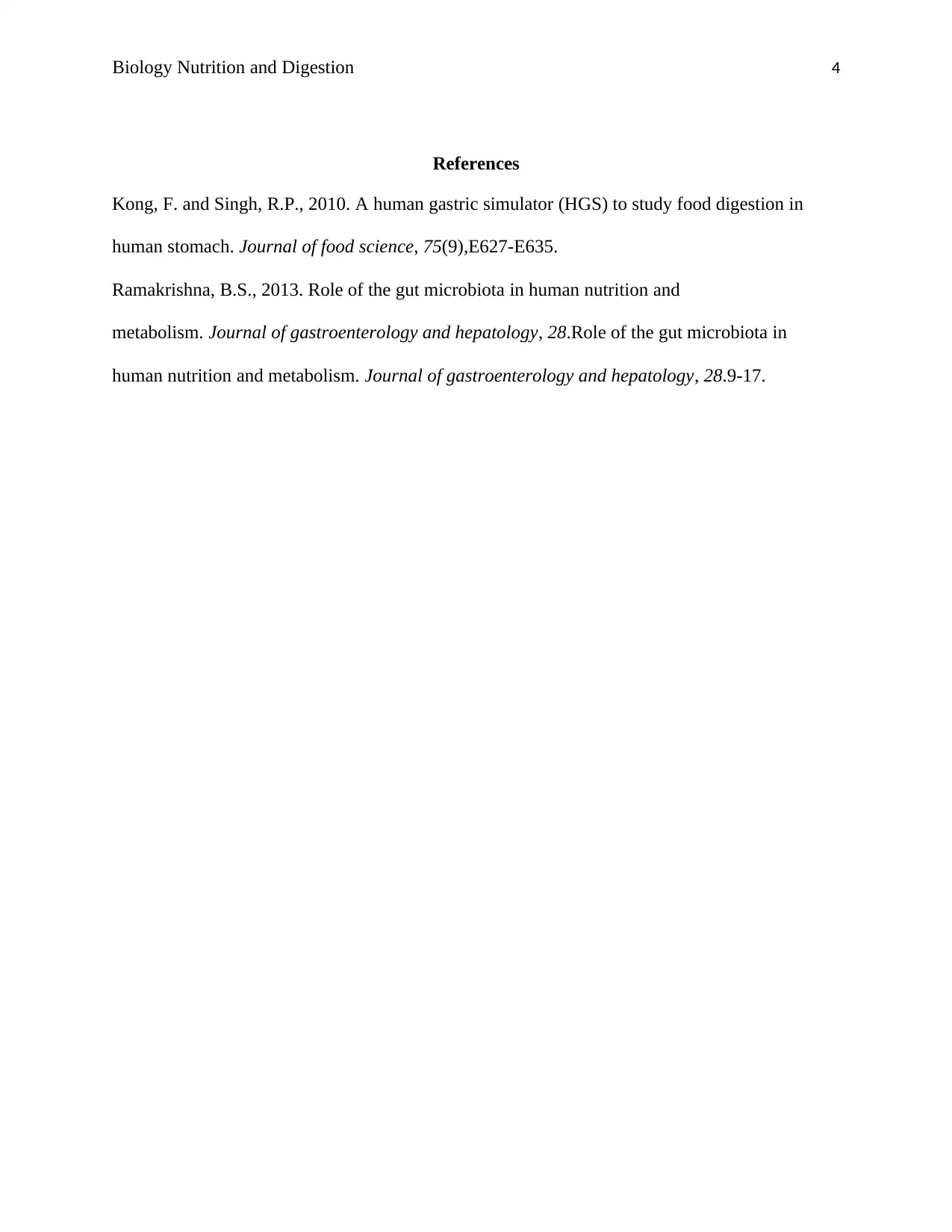Biology Report on Nutrition, Digestion, and Human Digestive System
VerifiedAdded on 2023/04/19
|4
|560
|474
Report
AI Summary
This biology report provides a comprehensive overview of the human digestive system, starting with the anatomy of the digestive tract, detailing the processes of ingestion, digestion, absorption, assimilation, and egestion. It explains the origin and functions of various digestive secretions, including salivary amylase, gastric mucus, pepsinogen, pancreatic enzymes, and bile juice, emphasizing their roles in breaking down carbohydrates, proteins, and fats while protecting the alimentary canal. The report also discusses the crucial role of gut flora in human health, highlighting its functions in fiber digestion, brain health, and breast milk metabolism, and identifies factors such as infections, genetics, diet, and medications that can affect the gut microbiome. Desklib provides this document and many other solved assignments for students.
1 out of 4











![[object Object]](/_next/static/media/star-bottom.7253800d.svg)